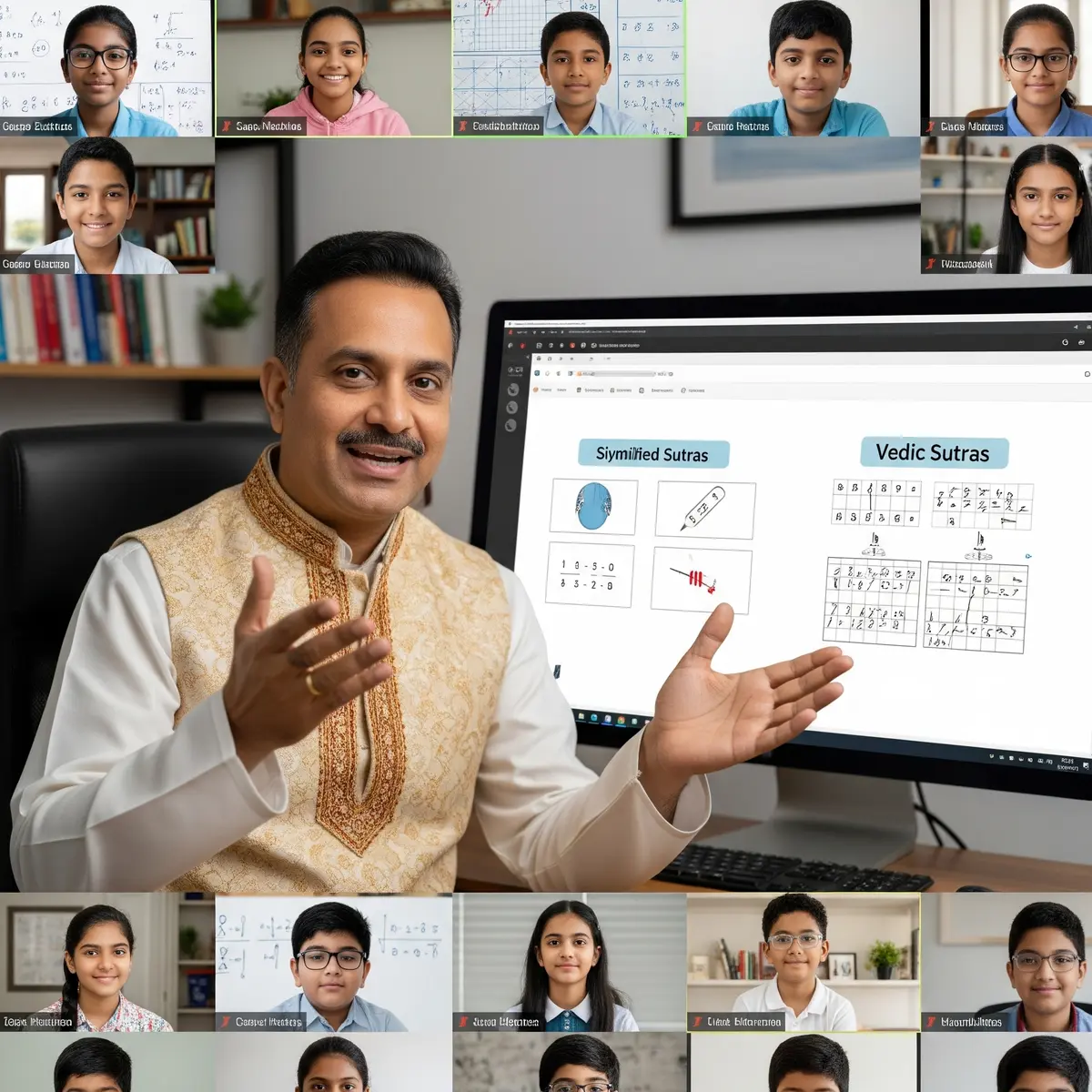Master These 5 Fast Calculation Techniques
Share this post:


Share this post:


Whether it's a CBSE exam or a competitive test, faster arithmetic gives you the winning edge. These five Vedic techniques are simple to learn but will have a massive impact on your speed and confidence.
Subtract any number from a power of 10 (like 100, 1000, 10000) in a single line. This is a game-changer for subtractions.
Example: 1000 - 487 = ? -> (9-4)(9-8)(10-7) = 513. Instant answer!
A universal method to multiply any two numbers, no matter how large, in a single line. This technique alone can save minutes in an exam.
Example: 21 x 32 = (2x3) | (2x2 + 1x3) | (1x2) = 6 | 7 | 2 = 672.
Find the square of any number ending in 5 in less than 3 seconds. It’s a simple, two-step mental process.
Example: 75² = ? -> First part: 7 x (7+1) = 56. Second part: 5² = 25. Answer: 5625.
Multiply numbers that are close to a base (like 100 or 1000) with incredible ease. Perfect for numbers like 97 x 96 or 103 x 105.
Example: 98 x 97 -> (98-3) and (97-2) -> 95 | (-2x-3) = 9506.
A powerful checking mechanism to verify your answers in addition, subtraction, multiplication, and division almost instantly. Dramatically reduces silly mistakes.
Example: Check 25x12=300 -> (2+5)x(1+2) = 7x3=21 -> 2+1=3. Answer's digit sum: 3+0+0=3. It matches!
Mastering even one or two of these techniques can cut down calculation time significantly. The key is consistent practice. By making these methods a part of your problem-solving toolkit, you'll not only become faster but also more accurate and confident in your mathematical abilities.